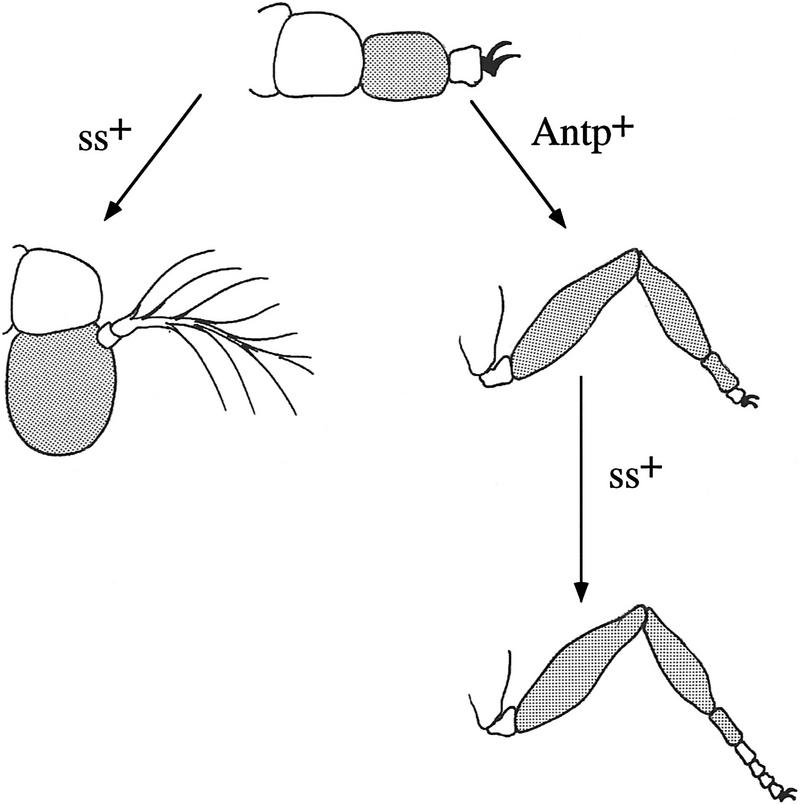Figure 9.
The ss− antennal appendage is close to an epigenetic ground state. The antennal appendage in ss− animals is indicated schematically at the top. The third segment of this appendage and its derivatives in the antenna and leg are shaded to indicate homology. As indicated, ss+ functions in the antenna to specialize the third and fourth segments of the ground state appendage to produce AIII and arista. In T2, Antp+ specifies the identities of the proximal two segments of the ground state appendage as coxa and trochanter, and directs the third segment to expand and subsegment to produce the femur, tibia, and first tarsal segment. These functions of Antp are consistent with the phenotype of Antp− clones in the leg (Struhl 1981, 1982b; Abbott and Kaufman 1986), and with the effects of ectopic expression of Antp in the antenna (Postlethwait and Schneiderman 1971). In the distal leg, ss+ directs the expansion and segmentation of the tarsus. The diagram predicts that the Antp− ss− second leg will look like the ss− antennal appendage. Although this has not yet been tested, the predicted phenotype is consistent with the additive effects of ss− and Antp− single mutants. The proximal two segments of the indicated ground state appendage are normal antennal segments; presumably the identities of these are specified by some other, currently unknown, homeotic gene or genes. Whether the evolutionary ground state of the limb is the same as the developmental ground state is not clear. However, it seems reasonable to suggest that it may be, and that an ancestral four-segmented appendage similar to the ss− antenna became specialized in the head to produce the antenna, and in the thorax to produce legs.

